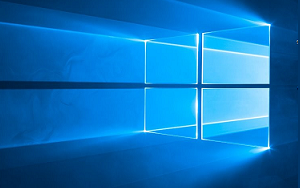Learn how to enable Dark Mode in Windows 11 with our step-by-step guide. This feature can reduce eye strain and improve battery life by changing the system theme to a darker color scheme. Discover how to customize your experience with ease.
Windows 11 brings a refined and modern interface, and one of the most sought-after features is Dark Mode. This mode is not only visually appealing but also offers several practical benefits, including reduced eye strain and improved battery life on laptops and tablets. In this article, we'll provide a detailed guide on how to enable Dark Mode in Windows 11, along with some tips to customize the experience further.
Why Use Dark Mode?
Dark Mode is more than just a visual preference. Here are some reasons why you might want to enable it:
- Reduced Eye Strain: Dark Mode decreases the amount of blue light emitted by your screen, helping to reduce eye fatigue, especially in low-light conditions.
- Battery Efficiency: Devices with OLED or AMOLED screens benefit from longer battery life because dark pixels require less energy.
- Improved Focus: The darker background minimizes distractions, helping you concentrate better on your tasks.
Enabling Dark Mode in Windows 11
Follow these steps to switch your Windows 11 system to Dark Mode:
- Open Settings: Click on the Start Menu and select Settings, or press Windows + I.
- Navigate to Personalization: In the Settings window, find and click on Personalization from the left-hand menu.
- Select Colors: Under the Personalization settings, click on Colors in the main window.
- Choose Your Color: In the Colors section, you'll see a dropdown menu labeled Choose your color. Click on it and select Dark from the options.
- Apply Dark Mode: Once you select Dark, your system will automatically switch to Dark Mode, changing the background color of system apps, settings, and supported applications.
Customizing Dark Mode
Windows 11 offers additional customization options to enhance your Dark Mode experience:
Accent Colors
Accent colors can be used to personalize your interface further. To change the accent color:
- In the Colors section of Settings, scroll down to find Accent color.
- Select Manual to pick your desired color, or choose Automatic to let Windows select a color based on your wallpaper.
Transparency Effects
Transparency effects add a modern look to the interface. To enable or disable these effects:
- In the Colors menu, find the toggle labeled Transparency effects.
- Switch it on or off according to your preference.
Dark Mode for Apps
While system apps automatically switch to Dark Mode, some third-party applications may require manual adjustment:
- Check App Settings: Open the settings of the specific application and look for a theme or appearance option to switch to Dark Mode.
- Update Apps: Ensure that your applications are up-to-date, as newer versions may include support for Dark Mode.
Troubleshooting Dark Mode Issues
If you encounter issues while enabling Dark Mode, try the following solutions:
- Restart Your Device: A simple restart can resolve temporary glitches and apply changes effectively.
- Check for Windows Updates: Ensure your Windows 11 is up-to-date, as updates may include bug fixes and improvements related to Dark Mode.
- Reset Personalization Settings: If problems persist, you can reset your personalization settings to default and try enabling Dark Mode again.
Conclusion
Enabling Dark Mode in Windows 11 is a straightforward process that enhances your user experience by offering a visually pleasing and efficient environment. With the steps outlined above, you can easily switch to Dark Mode and customize it to suit your preferences. Whether you’re working late at night or simply prefer a darker interface, Windows 11 provides the flexibility to accommodate your needs.







